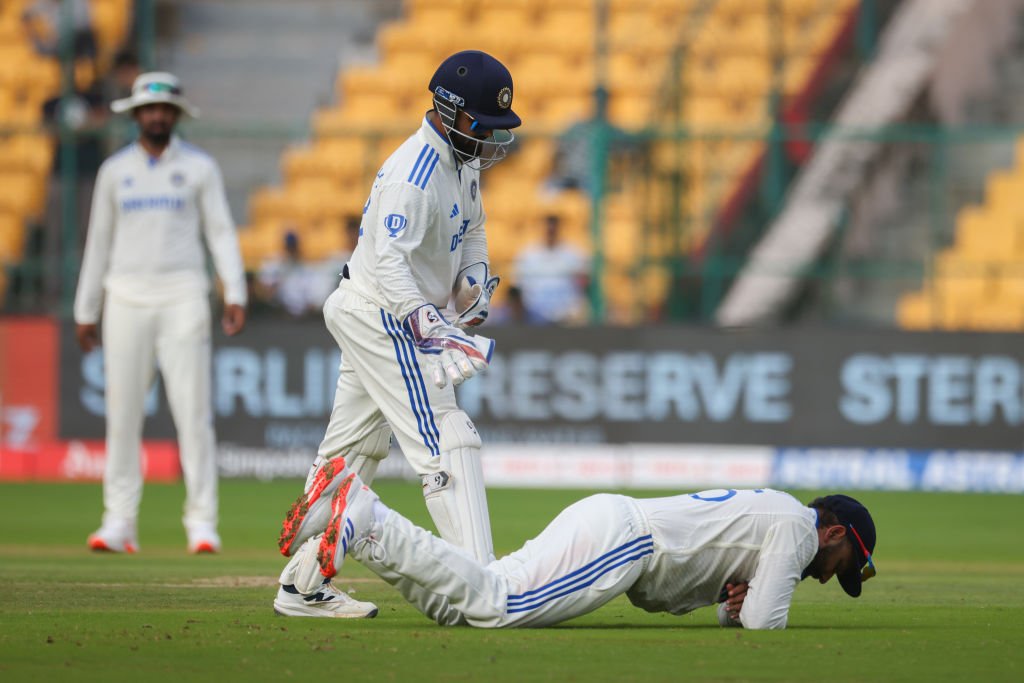
India’s home Test captaincy record has always carried a sense of pressure and high expectations, especially with the nation’s formidable home performances in recent decades. However, Rohit Sharma recently joined an “unwanted list” of Indian Test captains who have recorded notable defeats at home. Sharma’s tally of home Test losses reached four, placing him alongside former captains Kapil Dev and Mohammad Azharuddin. Leading India’s Test side, particularly on home soil, has consistently been an arena where only a few captains experience substantial defeats, given India’s long-standing dominance in domestic conditions. Yet, with high stakes and the rigorous demands of Test cricket, even the best leaders can encounter challenging outcomes, as illustrated by Sharma’s recent record.
Rohit’s fourth loss on Indian soil aligns with Kapil Dev’s and Azharuddin’s own Test records, each having faced four defeats while captaining India at home. For comparison, Mansoor Ali Khan Pataudi holds the record for most home Test losses as an Indian captain, with nine defeats during his tenure, a significant record that remains unmatched. Under Sharma’s leadership, though India continues to have formidable home performances, the recent losses underscore the evolution of international cricket, where home advantage no longer guarantees success as robustly as in the past.
The Context of Rohit Sharma’s Home Losses
Rohit Sharma’s current place on this list comes with some historical weight, as well as context tied to changes in global Test competition. His tenure has seen match-ups against highly competitive international sides, including New Zealand, who achieved a historic win against India on home turf. This was the Kiwis’ first victory on Indian soil in 36 years, marking a significant achievement and highlighting the elevated competition among Test teams globally. Sharma’s tenure began at a time when Indian cricket was navigating transitions in its roster, including the retirement or phasing out of several key players from previous years.
Although India under Sharma has experienced defeats, they have also secured several high-profile wins and series victories. However, home series losses to teams like New Zealand have added pressure, placing Sharma’s leadership under scrutiny, particularly given the high expectations around India’s home dominance. Captains before him, including Virat Kohli, maintained an impressive win record on Indian soil, and Kohli’s limited losses during his captaincy years have set a high benchmark that intensifies the focus on Sharma’s performance.
Factors Behind Recent Home Test Losses
There are several factors at play regarding Sharma’s recent string of home Test defeats. Indian pitches, long known to be favorable to spin bowlers and supportive of India’s typical strengths, have been carefully prepared to encourage fair play for both teams. This has sometimes led to challenges for the Indian team, which traditionally relied on pitch conditions favoring spin and slow bowling. Teams like New Zealand and England, equipped with adaptable batters and seamers capable of exploiting these conditions, have proven that a skilled strategy can level the playing field.
Moreover, Indian players face an increased number of matches and tournaments, sometimes leading to fatigue and less recovery time between series. Sharma’s leadership tenure has coincided with this heightened intensity, possibly influencing the outcomes of recent games. Additionally, the mental and physical demands on players have been amplified, which can impact consistency in performance, even on home pitches.
How Sharma Compares with Past Captains
Joining a list with iconic figures such as Kapil Dev and Mohammad Azharuddin highlights both the responsibility of leadership and the unpredictability of the game. Dev’s tenure as captain saw him make bold choices, often prioritizing aggressive plays, while Azharuddin’s captaincy in the 1990s came during an era of transition for Indian cricket. While Sharma’s four defeats place him in a less-than-ideal record group, the changing dynamics of cricket today mean that this record may not fully reflect his strengths as a captain.
Each captain’s era faced distinct challenges. For instance, Kapil Dev led during a period when Indian cricket was still establishing itself, often battling powerful teams like the West Indies and Australia on home soil. Azharuddin’s time saw the rise of India’s international influence, though the team also encountered challenges. The landscape in which Rohit Sharma leads today includes higher competition and often unexpected team strategies from opponents, all contributing to his current record.
Sharma’s Way Forward and His Legacy
As Sharma seeks to establish a stronger legacy, bouncing back from these defeats will be critical. India’s recent successes in ODI cricket under his leadership and the resurgence of young talents give hope that the Test side can also regain dominance. Sharma’s experience and adaptability, which have made him a standout player across formats, could still serve him well in upcoming matches. With India facing more home and away Test series in the near future, Sharma has the chance to turn the tide, building a legacy beyond the recent setbacks.
The high expectations around his captaincy will continue to motivate him, especially in maintaining India’s home prowess. Sharma’s commitment to the team and his passion for the game remain clear, with fans hopeful that his future in Test captaincy will reflect India’s historic strengths and adapt to the new challenges of international cricket.

